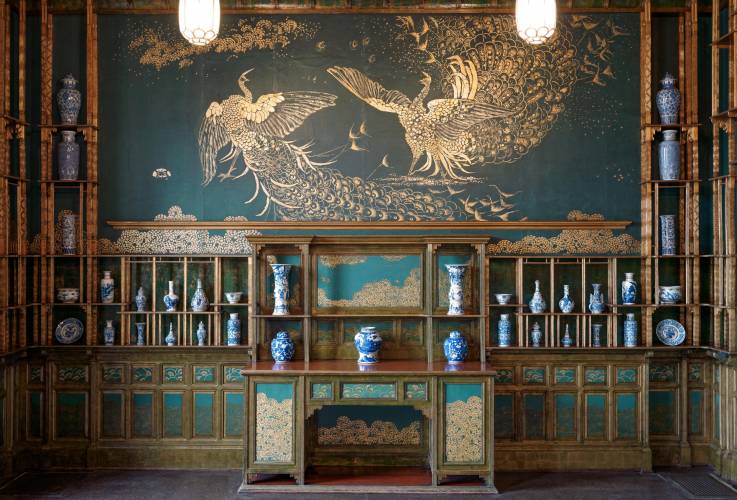James McNeill Whistler’s only surviving decorative interior, known as the Peacock Room, can now be seen by the public, newly restored at the Smithsonian’s Freer Gallery of Art. With it’s blue-and-gold, peacock-plumage-painted walls and ceiling, the room was designed to showcase Whistler’s patron, Frederick Leyland’s, collection of Kangxi porcelain from 17th-century China. The Freer commissioned 95 new ceramic pieces to fill the walls and complete the display as Whistler had intended.
“Whistler believed in the ‘totalizing’ aesthetic, in providing an immersive experience into this world of beauty he was creating. He felt art shouldn’t be limited to the interior of a frame, but extend to the room itself.”
For the first time in more than a century, James McNeill Whistler’s Peacock Room can be seen as the artist originally intended it, now that the Smithsonian’s Freer Gallery of Art has restored the iconic installation to its original splendor.
The room, Whistler’s only extant decorative interior, began life as the London dining room of British shipping magnate Frederick Leyland. Whistler’s first major patron, Leyland wanted his home in Kensington “to be a palace of art to match his cultural standing,” says curator Lee Glazer, director of Colby College’s Lunder Institute for American Art.
The commission for the room had originally been given to architect Thomas Jeckyll, who was sidelined by illness. Whistler, who was working on another part of the house, volunteered to complete it. But he convinced Leyland to stay away, and went about completely redesigning the space.
“He sends Leyland letters, telling him, ‘I’m transforming your dining room. It’ll be a gorgeous surprise!'” Glazer tells Newsweek. “But he never said exactly what he was doing. And he didn’t tell Leyland that he was inviting members of the press to see what he was up to.”





